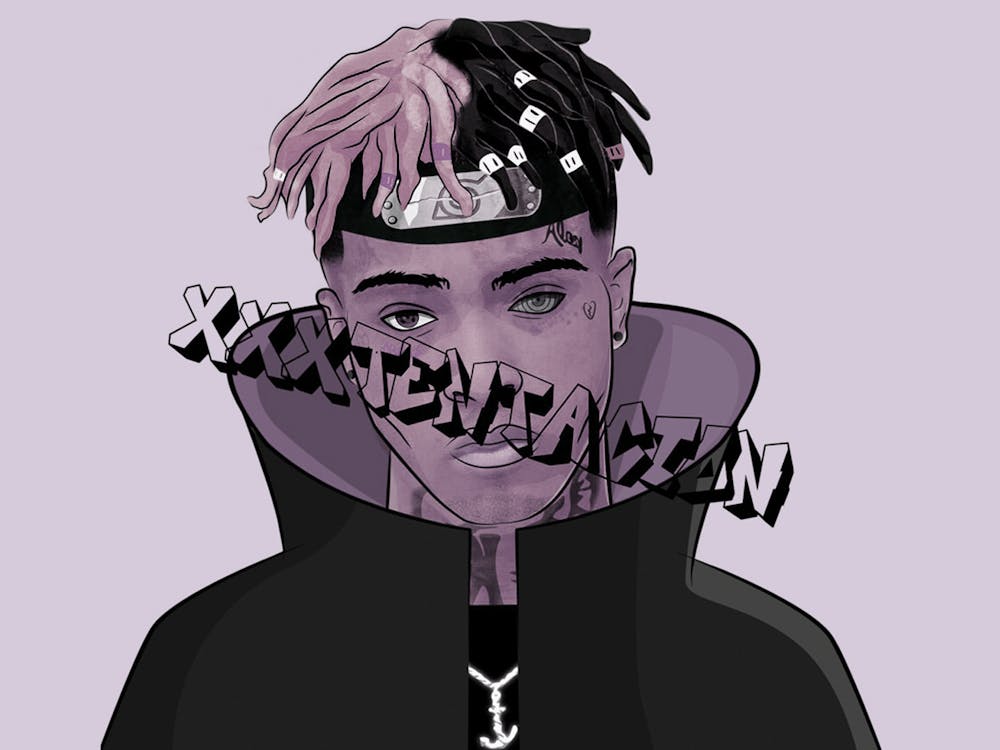Jahsen Onfroy, or XXXTentacion, had one of the most interesting careers in all of rap music. From the moment he burst onto the scene with the aptly-titled attention-grabber “Look at me!”, he was lauded and vilified. He came to embody the SoundCloud-circa-2016 delivery and attitude, in all of its brash irreverence.
He quickly became a source of immense controversy, as his considerable run-ins with the law for gun possession and domestic abuse came into the light. His mixtape, “17,” was released in August 2017, and fans of his blood-boiling, militant persona were thrown for a loop.
On “17,” X brought mental health and self-hatred into the forefront of rap, legitimizing these issues in front of one of the demographics that they affect the most: internet-dwelling teenagers. Over guitar-heavy beats, he addressed his battles with his own mind without languishing in or romanticizing them. He barely raps on the album, opting instead to sing with haunting abandon.
He stood alone in the face of a genre built around self-aggrandizing bravado and announced that he was sick and needed help just to live. It was a powerful admission that was only bolstered by his most successful work, “?”, which dropped a year later. Calling “17” overly homogenous is a fair if insensitive criticism (he never strays far from his central themes of misery and soul-sucking insecurity), one inapplicable to its successor.
“?” is a tour-de-force of X’s seemingly limitless adaptability, which is why it will always defy categorization. The songs range from hard yet socially conscious boom-bap to crooning party anthems accompanied by a 12-year-old to satirically-titled reggaeton bangers. When artists take this liberal of a creative license, the result can be scattered and prone to criticism, and this album is not without its faults. With the exception of some notable throwaways, however, this album is a map of one of the most gifted minds of his generation.
On June 18, 2018, Jahseh Onfroy was robbed and shot multiple times. He was dead by the time he reached the hospital. The hip hop community was ripped in half, a split that remains to this day.
Half of the community was glad to see him go. He committed unforgivable acts of violence in life. He terrorized his girlfriend for years, beating her for listening to other rappers, strangling her on multiple occasions and denying her medical attention despite serious injuries. Instead, he drove her to an unknown apartment and locked her in a room for two days before she managed to escape and call the police. While he pleaded not guilty to these charges, a recording, which both the prosecutors and his own defense consider confessional, was released after his death.
The lion’s share of the other half were not privy to his monstrous private life, and adored him for how understood he made them feel, and how undeniably talented he was. The charges against him, during his rise to stardom, were dismissed as unsubstantiated conjecture. Those who thought the charges had merit often hid behind a claim of separation of art and artist, or even going as far to say that he was a victim of the ignorance and immorality that comes with poverty. As his status continued to rise, he began to delve into philanthropy, providing yet another excuse for his fans’ loyalties. Whether these acts were genuine or orchestrated to increase his public image is still a source of debate.
This dichotomy of responses, paired with the inevitable explosion in public awareness that artists find in death, elevated him to superstar status, far beyond anything he reached while alive. His estate grieved, but their tears were wiped away by millions of dollars, and their pain was eased by the prospect of millions more. Onfroy left an enormous vault bursting with choruses and verses. Every song other rappers had stashed with X was quickly released for recognition and easy streams.
His label, mother and colleagues decided that selling his legacy for easy money was not enough. They decided to put together multiple full posthumous projects. The first, “SKINS,” was released months after that damning recording appeared, but fans’ shield from these accusations had transitioned from uncertainty about the facts to the uselessness of boycotting the work of a dead man. But “SKINS” was awful. It hinted towards a disjointed screamo-rap hybrid genre that even X did not have the talent to legitimize. The verses and hooks were haphazardly slapped onto bad metal beats to form just 10 minutes of thoroughly unenjoyable music.
His new posthumous album, “Bad Vibes Forever,” supposedly and hopefully the final one, does not attempt to build on Onfroy’s character. Instead, it seems content to milk the final dollar from him. It is more playlist than album, with one absolutely hackneyed song after another, and some of the worst and most blatantly stream-padding features on any album ever. None of the a cappellas are married to remotely complementary beats.
The population that only sees X as a monster is obviously against any future releases by him, no matter the quality. The group that still worships him universally hated this album, and have felt his legacy degrading with each passing new release. The question remains, then: whom are these new XXXTentacion albums for? It seems like a unilaterally awful idea to at once promote a man who assaulted, kidnapped and imprisoned his pregnant girlfriend and release horrible music to a fan base that has expressed a complete disinterest in future projects. The pro-X and anti-X coalitions have united against whoever’s awful call it was to make “Bad Vibes Forever.”
Get The Chronicle straight to your inbox
Sign up for our weekly newsletter. Cancel at any time.

